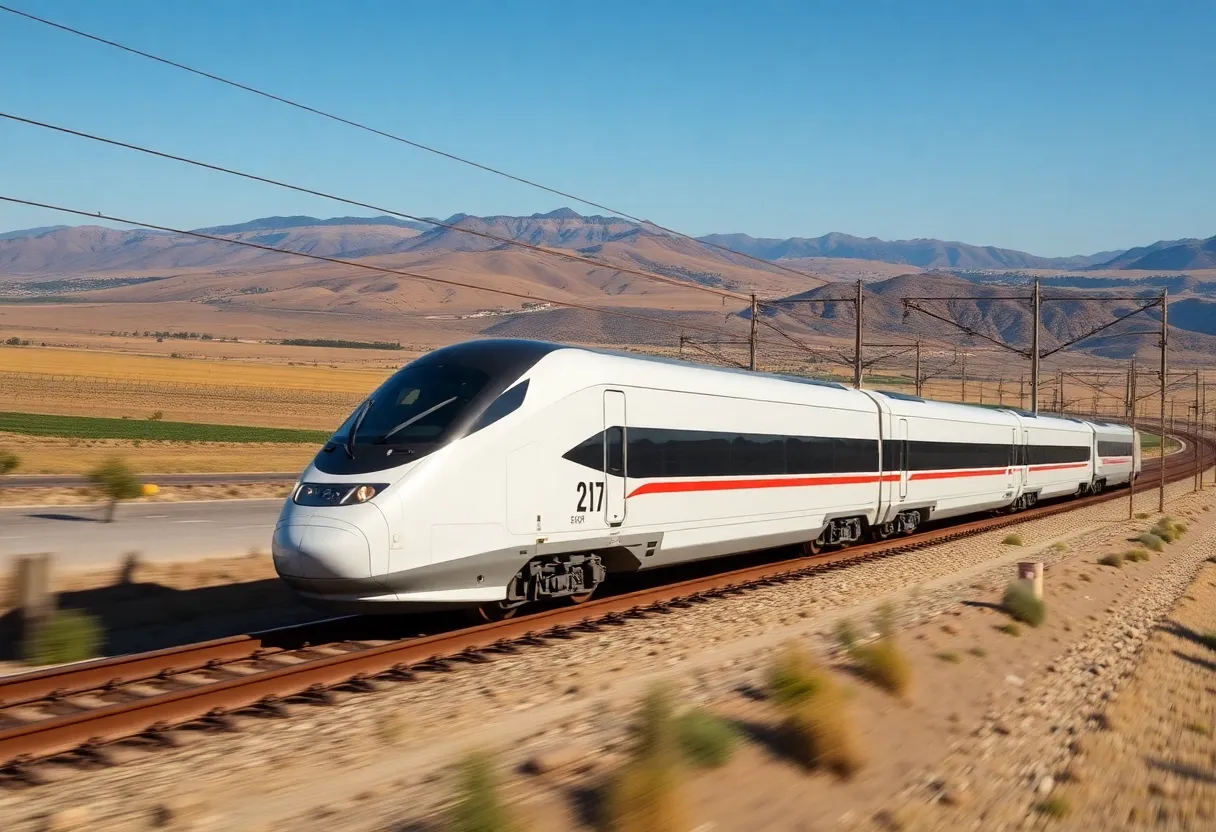News Summary
California lawmakers are pushing for a $1 billion annual investment from cap-and-trade revenue to support the high-speed rail project. Despite challenges like federal funding cuts and ballooning costs, the project has already created nearly 15,000 jobs and aims to foster significant economic growth. Critics question the allocation of funds, suggesting taxpayer dollars could be better utilized elsewhere. As construction continues, the future of the rail initiative hangs in the balance, making the current push for financial backing critical.
California’s Bold Move to Boost High-Speed Rail Funding
As the dream of a high-speed rail network in California faces rough waters, lawmakers are rallying together to push for a hefty annual investment of $1 billion from cap-and-trade revenue. This step aims to keep the ambitious project thriving amid growing concerns regarding federal funding cuts.
The Cap-and-Trade Revenue Explained
So, what’s cap-and-trade? It’s a program where major polluters are required to buy credits to offset their carbon dioxide emissions. This policy not only encourages companies to clean up their acts but also generates billions in revenue each year. Now, a significant chunk of this money is being eyed for the high-speed rail initiative, signaling a firm commitment to a modern transportation system.
The Jobs and Economic Growth
The high-speed rail project has become much more than just a public transport endeavor. It has already created almost 15,000 jobs and raked in around $22 billion in economic growth for the state. A completed line connecting Los Angeles and San Francisco could potentially create over 1 million jobs and lead to about $86 billion in labor income. That’s no small potatoes!
Challenges and Delays
Impact of Federal Funding Cuts
Financial Viability and Future Directions
What Critics Are Saying
Conclusion
FAQs
What is the purpose of the high-speed rail project in California?
The high-speed rail project aims to create a modern transportation network that connects major cities in California, reducing travel times and improving accessibility.
How will the annual $1 billion investment from cap-and-trade revenues help?
This investment is crucial for ensuring ongoing construction and development of the rail system amidst uncertainties regarding federal funding, which has seen significant cuts recently.
What challenges does the high-speed rail project face?
The project is significantly over budget and behind schedule, with various permitting issues and changes to planned routes. Additionally, federal funding cuts have further hindered progress.
Key Features of the High-Speed Rail Project
| Feature | Details |
|---|---|
| Original Budget | $33 billion |
| Current Estimated Budget | Over $120 billion |
| Jobs Created | Nearly 15,000 |
| Projected Jobs from Completion | Over 1 million |
| Planned Completion Date | 2033 |
| Track Construction | 119 miles in the Central Valley |
Deeper Dive: News & Info About This Topic
- CNBC: Trump Administration and California Rail
- CBS News: Changes to California High-Speed Rail Project
- The Guardian: California High-Speed Rail and Trump Administration
- San Francisco Chronicle: Trump Administration Cuts to High-Speed Rail
- KMPH: California High-Speed Rail Challenges
- Wikipedia: High-speed rail in California
- Google Search: California High-Speed Rail News
- Google Scholar: California High-Speed Rail
- Encyclopedia Britannica: High-speed Rail
- Google News: California High-Speed Rail

Author: STAFF HERE AUGUSTA WRITER
The AUGUSTA STAFF WRITER represents the experienced team at HEREAugusta.com, your go-to source for actionable local news and information in Augusta, Richmond County, and beyond. Specializing in "news you can use," we cover essential topics like product reviews for personal and business needs, local business directories, politics, real estate trends, neighborhood insights, and state news affecting the area—with deep expertise drawn from years of dedicated reporting and strong community input, including local press releases and business updates. We deliver top reporting on high-value events such as Arts in the Heart Festival, Westobou Festival, and Masters Week. Our coverage extends to key organizations like the Augusta Metro Chamber of Commerce and Greater Augusta Arts Council, plus leading businesses in manufacturing and healthcare that power the local economy such as Textron Specialized Vehicles, Cardinal Health, and Nutrien. As part of the broader HERE network, including HEREAtlanta.com and HERESavannah.com, we provide comprehensive, credible insights into Georgia's dynamic landscape.





